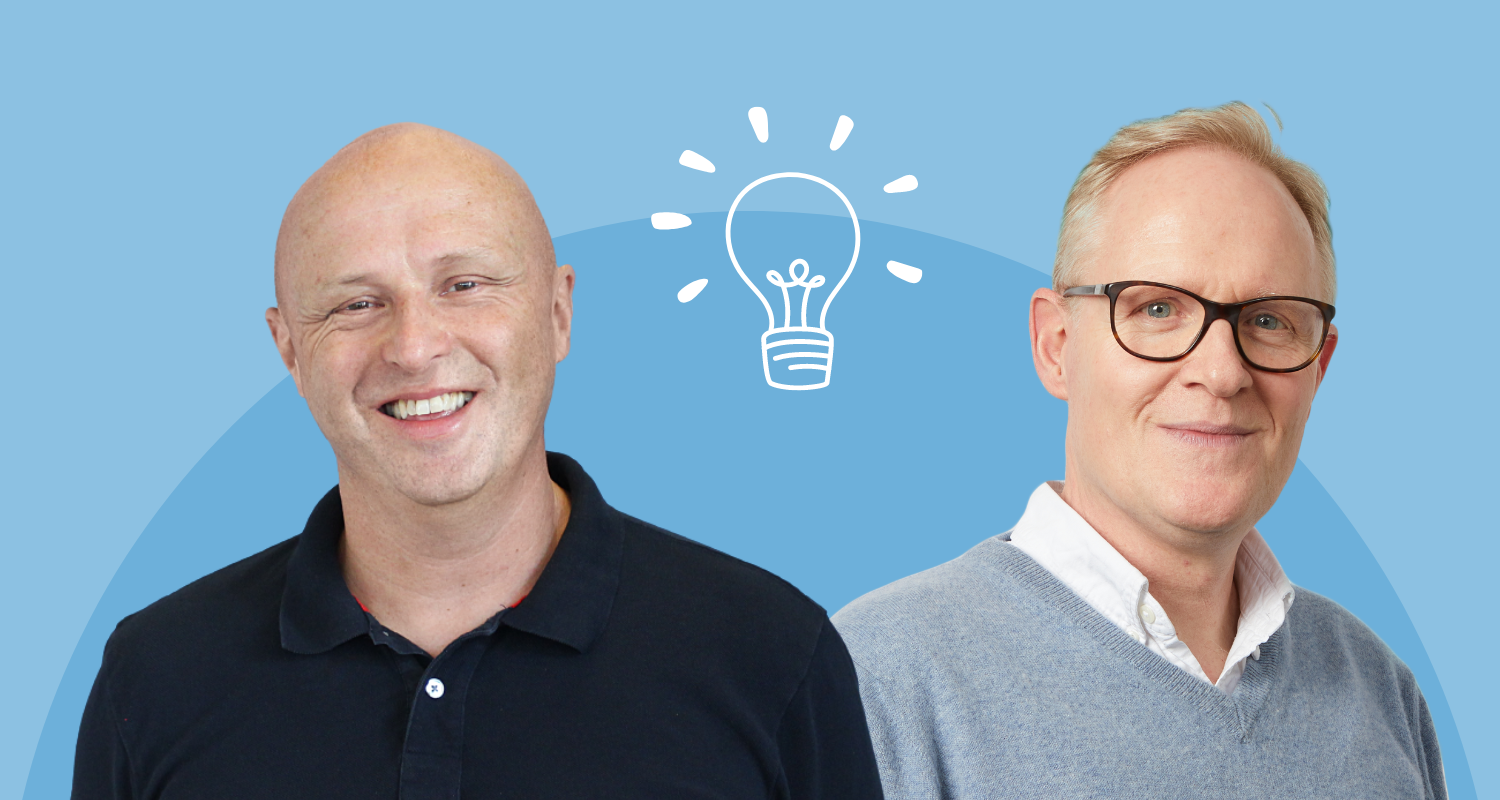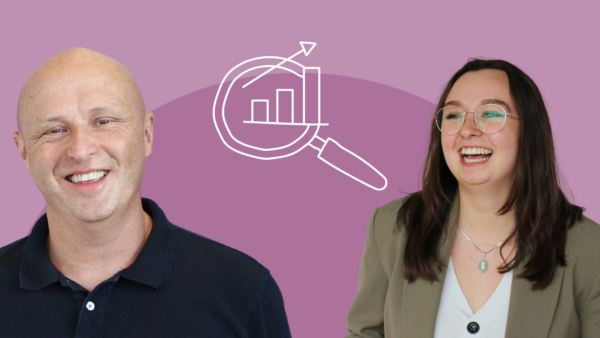Podcast transcript:
Hi, my name’s Dr Paul Brewerton, the strengths guy, Doctor of Organisational Psychology and founder and Chair of Strengthscope. I’m very excited today to have on the show the MD of Barefoot Coaching, Andy Chandler.
- Hi Paul – it’s an absolute pleasure to be here. Here’s my intro: I’m a husband, a father, a son, a brother, an uncle, a great uncle, a friend, a leader, a team coach, the MD of Barefoot Coaching – I am all of these things all at the same time and I’m delighted to join this podcast and hopefully connect with all of your listeners who also sit there with so many different hats on.
Welcome to the podcast Andy.
So today’s podcast is going to be fascinating for anyone using strengths in the context of coaching, and particularly, team coaching, as I know is a passion and a key area of practice for you Andy.
Before we get into all that, I’d love to hear a little about your story… how you got into coaching, team coaching, how your relationship with Barefoot came about and where does strengths fit in?
- Like many who come into coaching, it starts with my very own disorienting dilemma
- We often quote the work of David Mezirow at Barefoot when we share the kinds of situations that lead us to stop, pause, and critically reflect on what is going on. Ultimately. I’m talking about moments that if we choose to allow them, open the door into a field full of rich learning
- Like many others, my disorienting dilemma was that I was thriving in a corporate career as a leader, and whilst this came with amazing development opportunities, rewards and experiences, I was also puzzled by the fact that at some level I wasn’t always fulfilled. I knew that I was fascinated by developing others and what makes me and others tick, but I was finding myself increasingly leading work that didn’t get the best out of me.
- It’s a bit like that golden question we often ask clients: how often do you get to use your strengths in your job – which is sometimes followed by that very telling silence!
- Trained with Barefoot in 2014 and it was a revelation – instantly applicable – mindset as well as tools and frameworks. One of my strengths is flexibility and I was then, as I am now, attracted to learning new ideas and trying to find so many different ways of using these ideas
- I eventually started my own coaching business – which I loved – building a business, feeling responsible for putting a value on what I did for a living, nad recognising that unless I went and found the work, did it well and got paid – I wouldn’t get a monthly paycheck (which I had been used to for my whole career)
- Worked with Barefoot as an Associate – both coaching clients but also as a tutor on the Barefoot’s coach training programme and I guess that’s when I recognised that this was a business I wanted to be a bigger part of.
- Joined Barefoot as MD in 2021 just as the Pandemic was abating a little
- Team coaching – I’ve always been fascinated by teams – as a leader, a team member and as a coach. Over the years I’ve spent more time working with teams and in particular the hidden dynamics that are at play but not always obvious. Shout out to Barefoot TCPP and also to Coaching Constellations and their work in systemic coaching.
Tell me about the Barefoot business – how do you work with coaches and with clients?
- Barefoot was started over 25 years ago by the wonderful Kim Morgan, who is our founder and CEO. Kim tells the story better than I ever will about how it all started – often referring to it as Goldilocks and the three therapies. The headlines are that Kim originally trained as a Freudian psychotherapist. This work she found to be particularly rigid so she went further towards let’s say a warmer or softer approach – so she trained in Carl Roger’s humanistic and client centred approach. Whilst this was by its very nature warmer, it felt a little too sweet. At the time she was aware of something coming out of North America referred to as coaching and coupled with her insatiable appetite for exploring and learning multiple psychological approaches – created the Barefoot coach training programme.
- Since then, we have trained over 5,000 people to become coaches and that is an important part of our business. We teach people to become practical, confident coaches and our mantra is beware the person of one book, which speaks to an important principle about our approach. We believe that fundamentally the more flexibility a coach has, the more resources they have at their disposal, the more useful they can be to their clients.
- In 2001 we became one of the first coach training providers to offer a Postgraduate Certificate qualification in our partnership with the University of Chester – which is still going strong today. Not only does this route help delegates to consolidate their learning, but it enables people to gain a university postgraduate qualification who may never have gained a university qualification in the first place. We also have lots of examples of people taking this and then gaining masters and even doctorates in coaching.
- In 2011 our programme was accredited by the International Coaching Federation and we continue today to be a Level 2 accredited training provider. It’s worth saying that as an unregulated industry we are on a mission to ensure that our programmes and our coaching are of the highest quality. There are too many stories of people simply calling themselves life coaches etc…
- There are three strands to the business – we train people to become coaches, we train and develop existing coaches by challenging, deepening and broadening their skills and knowledge (such as becoming supervisors or professional team coaches) and we also provide coaching into organisations around the world – whether that’s 121 executive coaching, team coaching or group coaching.
Andy, how would you describe the role of psychometrics in general in a coaching context?
- Coaches starting out often become preoccupied with learning about psychometrics – my own experience EQi 2.0, MBTI, Strengthscope
- Performance, Image, Exposure
- Can opener vs tape measure
- Reminded of Jung quote – ‘learn your theories as well as you can but put them aside when you touch the miracle of the human soul’
How do you feel strengths and Strengthscope can play a role in coaching and team coaching?
- I love Strengthscope
- I think that a strengths-based approach work in multiple ways:
- Creating a safe space within which to practise having different conversations
- Helping people and teams to connect with their innate brilliance (cover ‘what have we got going for us’
- Connect people to their strengths in a way which encourages deeper critical reflection around themselves, in particular where they get their energy
- With that greater awareness they are better equipped to explore how they can use their strengths to move a step towards better on whatever it is they want to move forward on.
What have been your experiences using StrengthscopeTeam in team coaching? Have you got any examples of where it’s really helped a client?
- A team going leading significant change (doesn’t that describe most teams these days) – but in particular, facing resistance from some of their key stakeholders. I’m still surprised how many teams prefer to focus on the inner workings of the team rather than appreciating that it isn’t just the connections between members that matter – but the extent to which that team is connected to their key stakeholders.
- Reminded of Rick Maurer’s work on resistance – 3 levels – I don’t get it, I don’t like it and I’m not sure I trust you. This team were experiencing all three levels and with each day that passed, stress levels increased, frustrations boiled over and relationships were tested.
- When I met them for the first time I was presented with an extremely unhappy group of people, fractious, bickering who had lost touch with who they were never mind how they as a team could face into their current reality.
- It’s worth saying, as context, that this was a team leading a professional services business – loads of intellectual and physical energy, but struggling emotionally to make sense of what was going on and losing sight of the big picture.
- Strengths became a firebreak – immediately focusing the team on reconnecting with those aspects of themselves that had the potential to be useful to them. It helped move them from survival mode to competency mode from which we could work on a number of different interventions to enable them to move forward. Strengths weren’t the only answer, but they enabled the team to be in a state where they could move forward in a far more productive way. Before I forget, what was particularly helpful was when team members willingly offered up their strengths to the team to help them move forward (expend if needed)
What about challenges? Where’s it been more difficult to land?
- If all you have is a hammer, everything looks like a nail. Also not that dissimilar to Barefoot’s own mantra which is beware the person of one book.
- Whilst many clients (and some practitioners) want a silver bullet, the reality is that overreliance on strengths, or relationships or ways of working, or behavioural approaches, or processes is highly unlikely to help that team make progress that is sustainable.
- Strengths are not a substitute for some fundamentals around effective teams. For example, the very best teams that I’ve worked have team members who see their role in two discrete parts. The first part is that of a great functional leader. For me this is a given – when you land a role as an HRD or Ops Director of CEO, we should expect that you have the skill to do that role brilliantly. But what differentiates the best teams is that their team members are equally focussed on the part they play in creating an effective team – they pay attention to relationships, they are prepared to take accountability within the team beyond their own functional tasks and goals.
- Also, I want to say that there are many challenges working with teams. So many particular pitfalls are waiting for the team coach – in particular becoming entangled and colluding with the client. This is one which I feel is always in the wings when I’m with clients and I am exceptionally carefool to avoid this happening – because when the team coach gets too close, starts to refer to the team as us and we, then they are far less likely to be used to that team.
Which version of StrengthscopeTeam do you use – with or without habits?
- I typically use Strengthscope without habits. I absolutely see the value in using the framework with habits, my personal preference is to lay down a form foundation using strengths and then ‘dance in the moment’ and use team frameworks which I believe are in the service of the client. That can be the ‘with habits’ approach but it might also be the Peter Hawkins Five Disciplines or even explore Lencioni’s five dysfunctions, or I might not use any and simply find a a mix of approaches that works in the moment.
If people want to get in touch with you, what are the best ways to do that?
- Well, if you want to get in touch with Barefoot or know more about us then head to our website at barefootcoaching.co.uk. You can follow us on LinkedIn, Instagram and also listen to our regular Podcast. Also, feel free to connect directly with me on LinkedIn or send us an email at info@barefootcoaching.co.uk
Any resources you’d suggest for people interested in the topic?
- So many books that I would recommend on team coaching. My two personal favourites right now are Peter Hawkin’s book called Leadership Team Coaching, and also John Whittington’s excellent book called Systemic Coaching and Constellations.
- The best resource which I would highly recommend if you’re really interested in team coaching is to join our Team Coaching Practitioner Programme. A 12 week EMCC accredited programme dedicated to helping you become a confident practising team coach – I’m so proud of that programme and the difference it’s making in creating professional, skilled team coaches.












